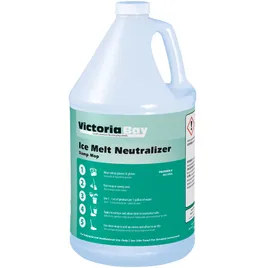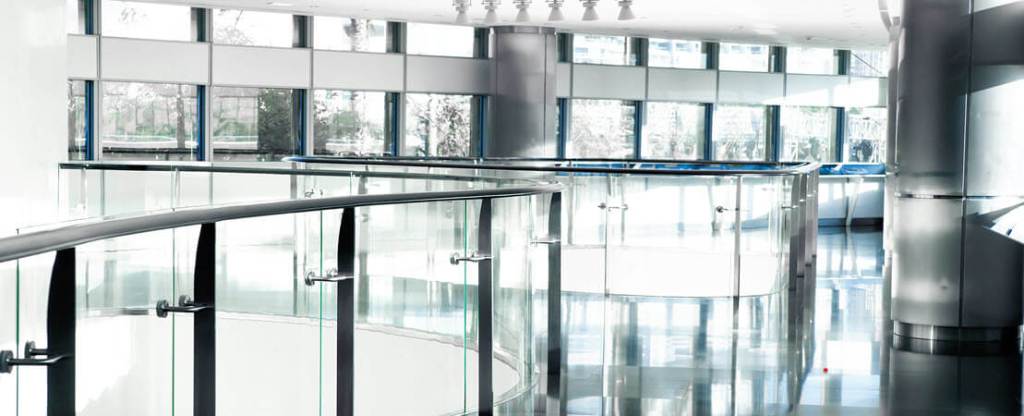Floor care is complicated, and when you add snow, ice, and salt to the equation, finding the right floor care solution can seem nearly impossible.
Whether it’s using the right floor cleaner to remove salt residues or selecting the best powered janitorial equipment to remove liquids, there’s a lot to keep in mind.
During the winter months, we often see the same floor care mistakes over and over. And, these mistakes cost your business time, money, and labor, but they don’t have to.
Below, we review some of the most common floor care mistakes so your staff know how to correctly prepare and protect your floors this winter.
Commercial Cleaning Tips:
Common Cleaning Mistake #1: Not Dust Mopping Before Cleaning
During the winter, ice melt and salt are necessary evils. They protect your guests from injury due to slips and falls, and help you avoid insurance claims and potential lawsuits. However, ice melt is often, if not always, tracked inside and across your floors on shoe bottoms.
Ice melt and salts are abrasive and easily scratch hard floors, creating a dull and damaged appearance. To protect your floors, your staff should begin a cleaning procedure by dust mopping or flat mopping to gather ice melt and salts from the floor. Following this, your custodial team can vacuum and scrub the floors.
In many facilities, custodial staff skip this step and proceed straight to floor cleaning/scrubbing procedures. It will be critical to the life and appearance of your floors, to dust mop and vacuum before cleaning your floors.
Staff should try to remove as much of the solid compounds as possible before scrubbing.
Salt, calcium, and other compounds found in ice melt are small, hard rocks. These particles are likely harder than your floor finish, and when left behind they are dragged around and crushed into the floor.
An added benefit of mopping and vacuuming before cleaning/scrubbing your floors is the reduced wear and tear on your autoscrubber. Ice melt compounds and salts are extremely corrosive and can wear the parts on your floor machine. Removing as much of the ice melt and salts from your floor before the cleaning procedure can help you save on future repairs and parts replacement.
Common Cleaning Mistake #2: Vacuuming When Floors Are Wet or Damp
While we normally recommend frequent vacuuming to keep soils off your floor, the winter months are tricky. Snow and ice are among the top cleaning challenges for facility maintenance.
When tracked in, snow and ice turn to water leading to wet, slippery hard floors and damp carpet. On top of that, it creates a hidden challenge for your cleaning team. Melted snow and ice can damage powered janitorial equipment, like vacuums.
Unless designated, commercial vacuums are not designed to be used on wet surfaces, this includes damp entryway matting.
Industrial vacuums have a lot of power and are built to extract soils embedded in carpeting and remove small particles from hard floors. With their strong lift and air suction, vacuums will not only remove these soils but can also suck up moisture from your floors. Unfortunately, vacuum motors are not resistant to water and are easily damaged.
It is common to find that custodial teams believe they can use vacuums in areas where there is only minimal moisture, but even in damp areas, water can be sucked from the carpet and turned into a mist which travels through the vacuum and can negatively affect the vac-motor.
If you are dealing with liquids or damp floors, we recommend the use of either a Wet/Dry vacuum or carpet extractor.
Common Cleaning Mistake #3: Failing to Remove Ice Melt From Carpet
While you may have a matting system at your entryway, ice melt can still get tracked throughout your facility.
On hard floors, you’re likely to see salt residues and white streaks which help to alert your staff that they need to clean the floors. With carpet, you may see white crusty buildup from salt residues, but oftentimes it is not as evident when there is ice melt on or in the carpet.
Ice melt particles and salt can fall deep into fibers. These particles are abrasive and can cut and dull carpet fibers, shortening the life of your carpet. Ice melt and salt that is stuck in the carpet can also cause discoloration when rinsed with the wrong cleaning chemical.
This requires increased and more thorough vacuuming to remove any solid ice melt compounds. While many often resort to vacuuming to remove ice melt, it is not enough to preserve the look and longevity of your carpet.
It is critical to the life of your carpet, that it is rinsed with a floor neutralizer and cleaned using a carpet extractor.
A neutralizing chemical is essential to this procedure. It will not react with salts and ice melt compounds which could otherwise stain or degrade carpets.
Common Cleaning Mistake #4: Confusing Neutral Floor Cleaner and Floor Neutralizer
As mentioned above, when cleaning commercial floors during the winter you will need to use a floor neutralizer for both hard and carpeted surfaces.
Many ice melts contain salt which can negatively react with floor cleaners.
Learn More About Ice Melt Compounds: What is Ice Melt? Selecting The Best Ice Melt For Your Facility
To avoid floor damage and any adverse reactions, you will need a floor neutralizer.

Floor neutralizers are specifically designed to dissolve ice melt chlorides, soap, and hard water films as well as scum, scale, and other organic residues. Floor neutralizer will both clean the floor and eliminate white residue so you only have to perform one floor care procedure.
On hard floors, floor neutralizers will help to prevent finish damage. When used on carpeted floors, it will help rinse salts from the carpet without damaging or degrading fibers.Do not try to use a cleaner with a high or low pH. Aside from potentially dangerous chemical reactions, high or low pH cleaning chemicals will not be effective at removing the residues. The pH of salts, which is the most common compound in ice melt, is very high.
Related: 4 Steps to Remove Ice Melt Residue and White Streaks From Hard Floors
Final Thoughts
Understanding the most common floor care mistakes can help your staff avoid, or recognize a mistake and alert them that they should take corrective action.
Hard floors and carpeted floors will require their own maintenance plan. During winter months careful attention should be taken to ensure the right chemicals and equipment are being used on each for best results and care.
While floor cleaning mistakes are common and bound to happen in every facility, training your staff can help limit the number of costly mishaps.
Imperial Dade locations provide a variety of training courses to educate staff on the best floor cleaning practices and procedures. Our hands-on courses allow attendees to interact with equipment while reinforcing the most up-to-date cleaning and maintenance practices.
If you’re located in the United States or Canada, contact a specialist today to learn more about training courses that can help your staff avoid costly floor cleaning mistakes.
Check Out These Related Articles:
- 4 Steps to Remove Ice Melt Residue and White Streaks From Hard Floors
- Winter Floor Maintenance Tips: 4 Tips to Protect Your Facility’s Floors
- What is Ice Melt? Selecting The Best Ice Melt For Your Facility
- 4 Daily Procedures to Maintain Your Facility’s Resilient Hard Floors
- What is an Automatic Floor Scrubber? (Types, Sizes, & Features)
